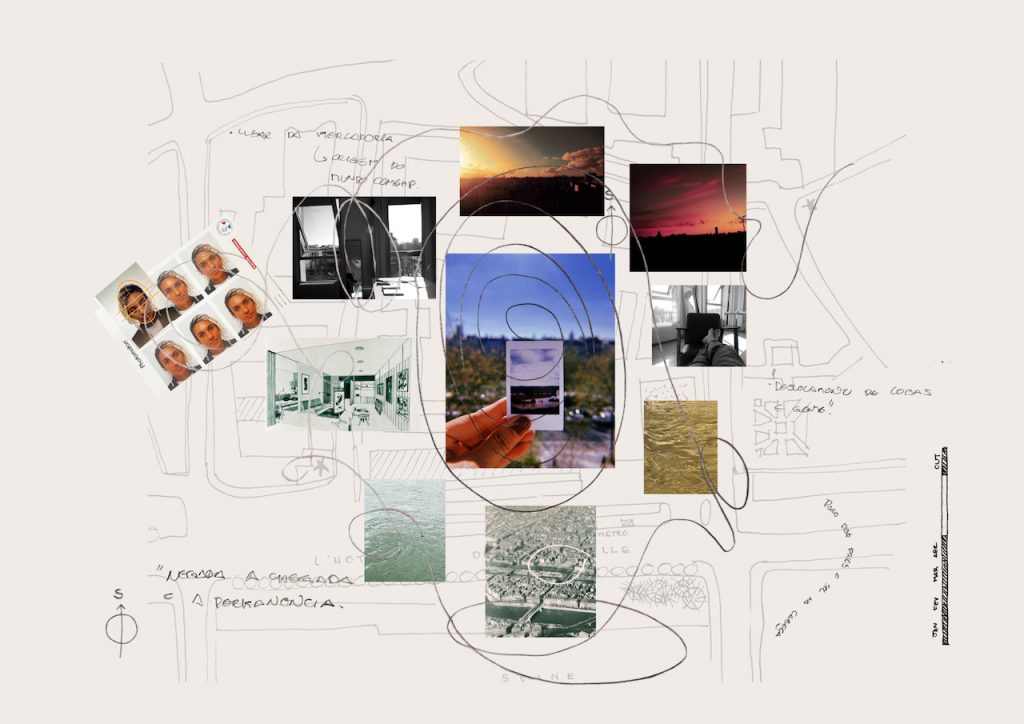Gabriela de Matos est une architecte, commissaire d’exposition, professeure et chercheuse née à Vale do Rio Doce (territoire autochtone Krenak, Brésil) et basée à São Paulo (Brésil). Son œuvre interroge de manière critique les intersections entre architecture, race, genre et écologie, en explorant comment ces dimensions interagissent et transforment les spatialités. Son travail remet en question les épistémologies dominantes en activant des contre-récits à travers le design d’exposition, des dispositifs pédagogiques et un engagement communautaire.
Elle est la fondatrice de plusieurs initiatives, dont le Black Architects Project et l’Instituto Cambará, qui soutiennent les pratiques et récits spatiaux afro-brésiliens. Gabriela de Matos a également co-curaté le Pavillon brésilien à la Biennale d’architecture de Venise 2023, qui a reçu le Lion d’or de la meilleure participation nationale.
Professeure à l’Escola da Cidade, elle intervient à l’échelle internationale et mène des recherches sur l’architecture afro-brésilienne et les pédagogies radicales. Sa pratique vise à repenser l’environnement bâti à travers des cadres fondés sur la justice.
Gabriela de Matos is an architect, curator, professor and researcher born in Vale do Rio Doce (Krenak indigenous territory, Brazil) and based in São Paulo (Brazil). Her work critically examines the intersections between architecture, race, gender and ecology, exploring how these dimensions interact and transform spatialities. Her work challenges dominant epistemologies by activating counter-narratives through exhibition design, educational initiatives and community engagement.
She is the founder of several initiatives, including the Black Architects Project and Instituto Cambará, which support Afro-Brazilian spatial practices and narratives. Gabriela de Matos also co-curated the Brazilian Pavilion at the 2023 Venice Architecture Biennale, which received the Golden Lion for Best National Participation.
A professor at Escola da Cidade, she is active internationally and conducts research on Afro-Brazilian architecture and radical pedagogies. Her practice aims to rethink the built environment through frameworks based on justice.

Cette œuvre explore les fragments philosophiques, poétiques, géographiques et affectifs qui ont marqué l’expérience de l’artiste au fil des années, jusqu’à prendre forme durant une résidence de trois mois à Paris. À travers des rituels intimes et des géographies affectives créées dans la ville, elle a construit un sentiment d’appartenance et de continuité, révélant que tout espace est en perpétuelle reconfiguration – traversé de ruptures, de différences, de devenirs.
Inspirée par la notion d’encruzilhada développée par Leda Maria Martins, un espace-temps performatif où se croisent mémoires, présences et temporalités, l’artiste inscrit son travail dans l’expérience du quotidien vécu entre des lieux, des identités et des histoires.
En tant que femme noire du Sud global, sa présence à Paris remet en question l’idée d’une ville « universelle ». Habiter le Marais fut un acte de négociation entre visibilité, étrangeté et ancrage. Les photographies et la cartographie présentées ici matérialisent ce processus : elles traduisent la manière dont l’éloignement est devenu proximité, et le déplacement, un foyer.
Ni archive, ni simple documentation, cette œuvre propose une cartographie performative, une mémoire sensible portée par le corps, l’affect et l’échelle du quotidien. La Seine, voisine de la Cité des Arts, a fait écho au Rio Doce de son Brésil natal, créant une passerelle entre deux eaux, deux territoires, deux appartenances.
Enfin, la pensée de Conceição Evaristo éclaire cette traversée sensible : « La vie était un temps mêlé d’avant-maintenant-après-et-d’après-encore. »
Encruzilhadas: Cartografias Íntimas draws on philosophical, poetic, geographical, and emotional fragments that have shaped the artist’s experience over the years, taking form during a three-month residency in Paris. Through intimate rituals and affective geographies crafted within the city, she cultivated a sense of belonging and continuity, revealing that space is never fixed, but constantly reconfigured through rupture, difference, and becoming.
Inspired by Leda Maria Martins’ concept of encruzilhada—a performative space-time where memories, presences, and temporalities intersect—the artist grounds her work in the everyday experience of the “in-between,” navigating shifting places, identities, and histories.
As a Black woman from the Global South, her presence in Paris challenges the idea of a so-called “universal” city. Living in the Marais meant constantly negotiating visibility, estrangement, and belonging. The photographs and mapping in this piece serve as junctions where the material and symbolic converge—where distance becomes closeness, and displacement, a form of home.
This is not a static archive, but a performative cartography, a living memory shaped by the body, by affect, and by the scale of daily life. The Seine, flowing beside the Cité des Arts, echoed the Rio Doce of her native Brazil. Between these waters, a bridge emerged, an act of belonging through ancestry, reminiscence, and affection.
The words of Brazilian writer Conceição Evaristo resonate throughout this journey: “Life was a time woven of before-now-after-and-then-again. Life was the blend of everyone and everything. Of those who had been, those becoming, and those yet to be.”
Vous devez être connecté pour poster un commentaire.